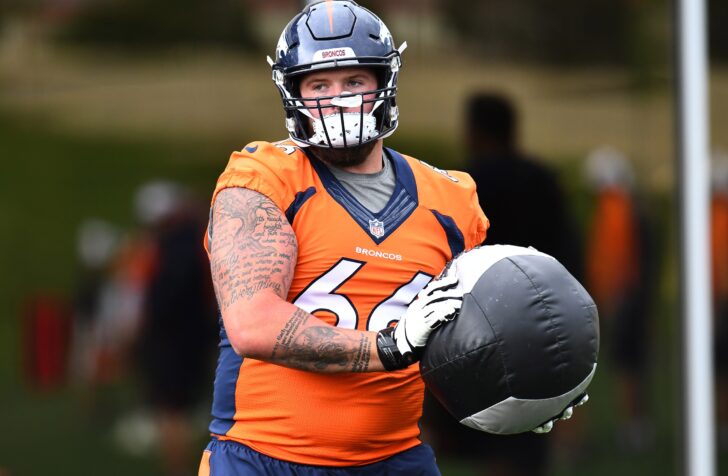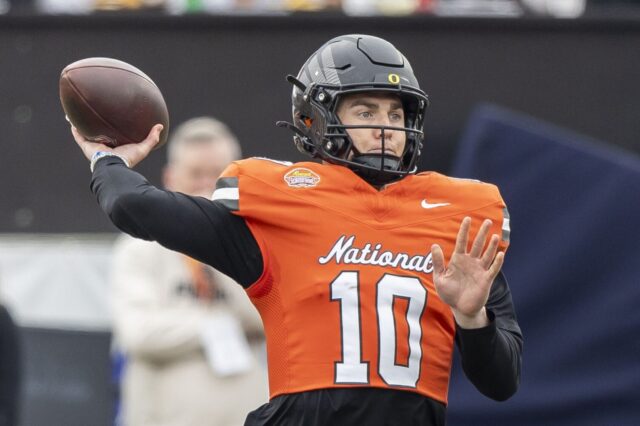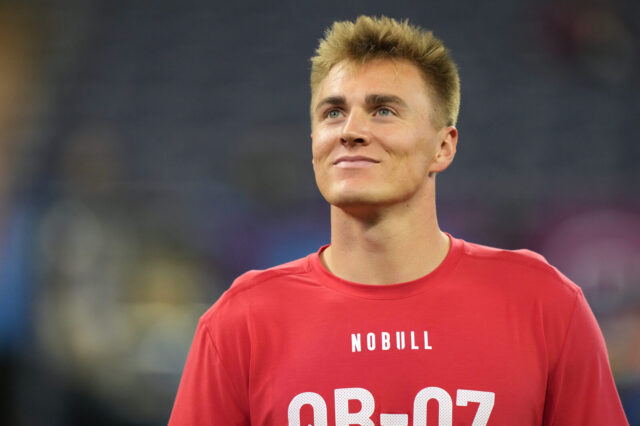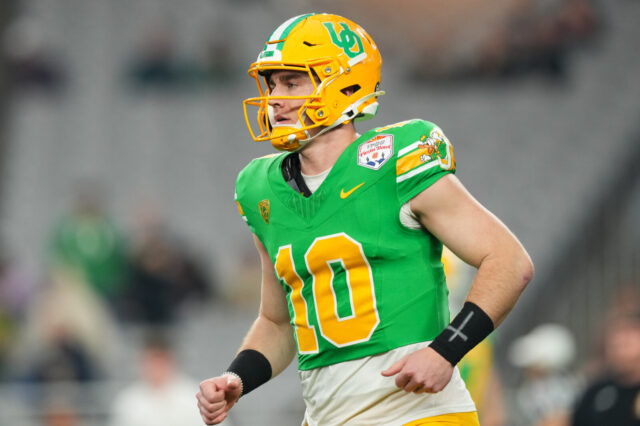The NFC South is the division of the quarterback, the AFC North is the division of hard-nosed defenses, and now, the AFC West is the division of the edge-rusher with talented duos throughout.
The incredible tandems of Joey Bosa and Melvin Ingram, Von Miller and Bradley Chubb, and Chris Jones and Frank Clark are easily three of the top five pass rushing groups in the league, meaning to compete in the division you need to have a strong line in order to protect the quarterback.
Finding such a line has been a challenge for the Broncos’ front office for years. However, with the additions of the league’s best offensive line coach in Mike Munchak, a talented and versatile rookie in Dalton Risner and a solidifying presence at right tackle in Ja’wuan James, the Broncos are hoping they finally have a unit that can keep their field general upright.
How does this new and improved squad compare to their division rivals? Let’s take a look:
Kansas City Chiefs
The Chiefs’ offense is easily the class of the AFC West. Not only do they have the league’s 2018 MVP in Patrick Mahomes, but they have one of the NFL’s finest group of pass catchers and an elite offensive line.
This is led in large part by their superstar right tackle, Mitchell Schwartz.
Schwartz is the best right tackle in the league and has been since signing with the Chiefs in 2016. His 2018 Pro Football Focus grade of 82.9 ranks second among right tackles (Rob Havenstein, 84.3), and fifth among all tackles. Schwartz also ranks as the best tackle on either side of the center in terms of pass blocking efficiency with a near perfect score of 98.1 (min. 550 snaps).
While Schwartz is the headliner, the rest of the Chiefs’ line is strong too. Left tackle Eric Fisher struggled early in his career after being drafted first overall but has developed into a high-tier lineman under Andy Reid. Right guard Laurent Duvernay-Tardif is an above-average guard who excels in the run game. Left guard and center have questions surrounding their starters, though Kansas City shouldn’t be too alarmed.
Keeping Mahomes healthy should be the Chiefs’ top priority, and with a line that doesn’t have a clear weak spot, that job should be pretty easy.
Denver Broncos
No AFC West team’s line is more ready to take a huge leap than the Broncos’ under Mike Munchak. Everywhere Munchak has gone, excellent line play has followed. This can most recently be seen in Pittsburgh, where he transformed three undrafted free agents, and two first-round picks into one of, if not, the best line in the league.
He’s now looking to do the same thing in Denver and should have no shortage of talent or potential to do so. Both tackles Garrett Bolles and Ja’Wuan James are first-round picks who are still in the early stages of their career leaving plenty of room for growth.
On the inside, Munchak has Dalton Risner, Connor McGovern and Ronald Leary to work with. Leary, the lone true veteran on the line, has been a Pro Bowl-caliber guard in the past, though it’s clear his tank is starting to get low on gas. If he struggles with injuries like he did last season, Elijah Wilkinson is ready to step in and has been impressing at training camp.
Note: The Broncos also recently added offensive lineman Tyler Jones from the Jets, though it’s yet to be seen if he’s anything more than a camp body.
Los Angeles Chargers
Much like the Broncos, the Chargers are a rebuilding line, though they have a lot less promise on theirs.
Not only do they not have a coach as talented as Munchak, but their players aren’t nearly as talented either. Russell Okung was at one point an elite tackle in the league, but those days are long gone. Right tackle Sam Tevi was one of the very worst offensive lineman in the league a season ago, earning a “starting-caliber grade” (defined as a grade >70 by PFF) in just one of his 18 starts last season, and earned a “below-backup-caliber grade” (defined as a grade <60 by PFF) in 10 of his 18 starts.
Former Broncos lineman Michael Schofield, Dan Feeney and Mike Pouncey start on the interior which is clearly the strength of the line.
Feeney has yet to live up to the potential that made him a high third-round pick in 2017, but he should make a leap in his second year starting. Pouncey is one of the better centers in the league and is easily one of the most valuable and underappreciated players on the entire roster. Schofield is a below-average guard, but with the lack of offensive line talent in the league, if he’s the weakest link on the interior, then the team is doing pretty well.
Oakland Raiders
The Raiders find themselves in last on this list, for the same reason the Broncos find themselves in second. The way the unit is trending, and most importantly, coaching.
It’s not too long ago that Tom Cable was hailed as one of the league’s best offensive line coaches a la Mike Munchak now, but his horrific struggles in recent years have led to him now being seen as one of league’s worst line coaches.
Since 2011, Cable’s lines have ranked among the bottom ten teams in terms of sacks allowed in all but two seasons. In 2017, before Cable joined Jon Gruden‘s coaching staff in Oakland, the Raiders were tied for the third-fewest sacks allowed (24). In 2018, Cable’s first season with the team, the Raiders were tied for fifth-most sacks allowed (52), and allowed almost two more sacks per game.
The Raiders didn’t make Cable’s job any easier by sending their two most talented lineman, Kelechi Osemele and Donald Penn, elsewhere. Rodney Hudson is still a stud at center, but questions plague the rest of the line.
How good will Richie Incognito be at age 36 after a year away from football? How much better is Kolton Miller after an atrocious rookie year that almost saw him benched? Can Trent Brown live up to being the highest-paid lineman in NFL history considering that he flamed out in San Francisco, and his lone good season came in New England under the coaching of Bill Belichick and elite offensive line coach Dante Scarnecchia?
Few, if any of the answers to these questions will go Oakland’s way.



